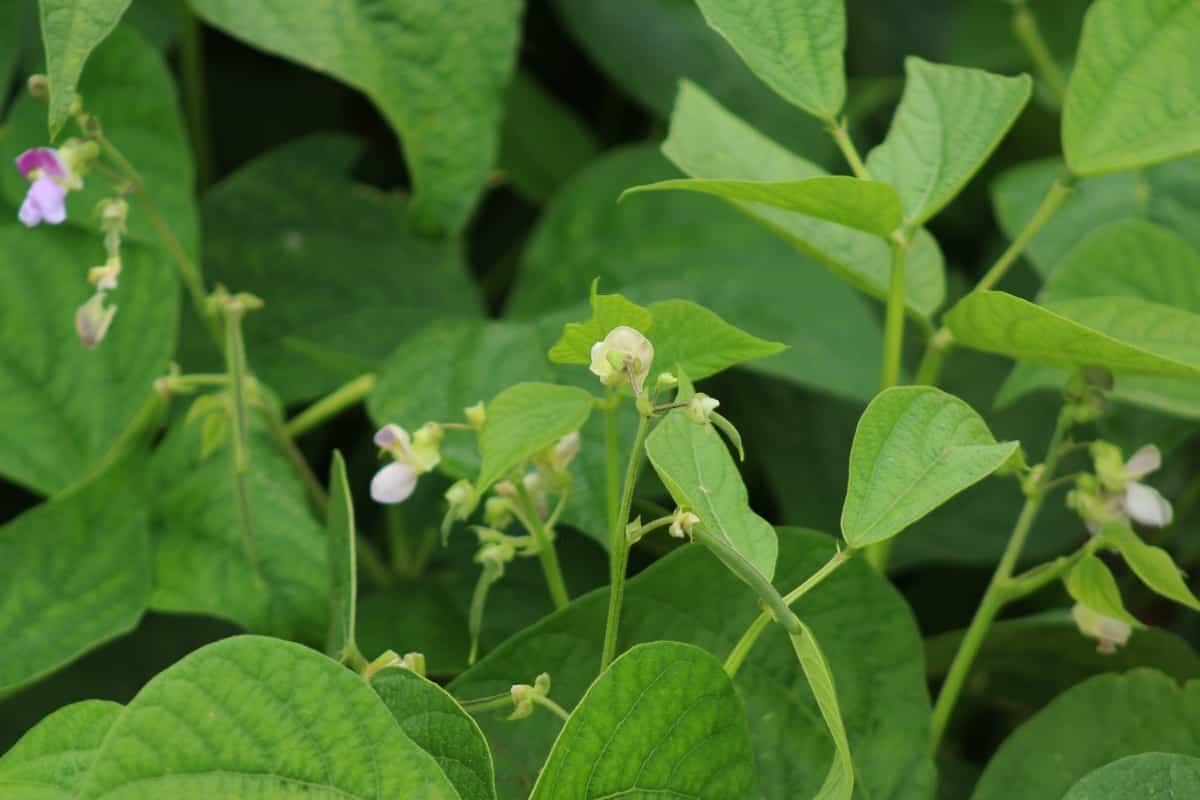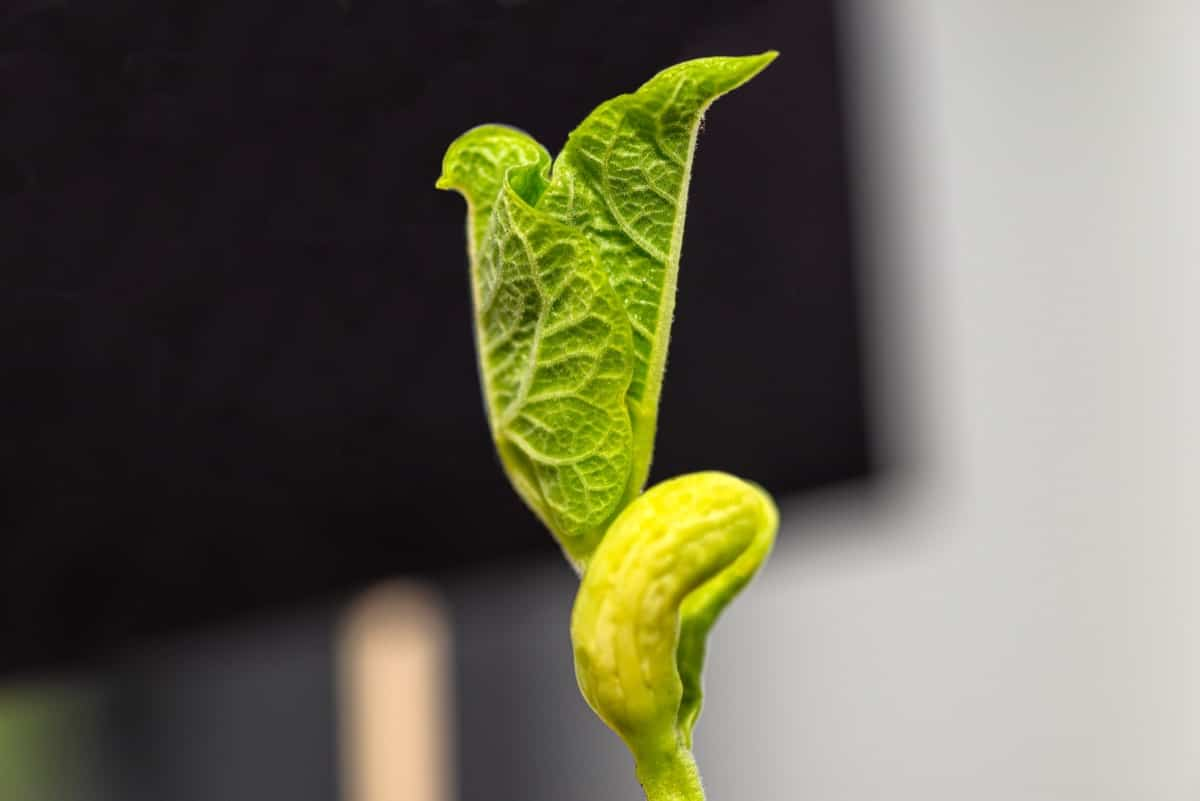Beans are a popular and nutritious legume that is widely consumed around the world. However, beans are susceptible to various diseases and pests that can hinder their growth and productivity like any other plant. One common issue that bean plants may face is leaf curl, which can negatively impact their overall health. In this article, we will explore natural and organic methods to effectively treat beans leaf curl, ensuring the well-being and productivity of your bean plants.

Natural and Organic Ways to Treat Beans Leaf Curl
Causes of Leaf Curl in Beans and Its Symptoms
Leaf curl in beans can be triggered by viral infections, such as Bean golden mosaic virus (BGMV) and Cucumber mosaic virus (CMV). These viruses are transmitted by insect vectors, particularly aphids, which introduce the virus into the plant while feeding. Once infected, the beans plant may exhibit symptoms of leaf curling, yellowing, stunted growth, and reduced yield. Several fungal diseases can also lead to leaf curl in the bean crop.
One common culprit is the Bean common mosaic virus (BCMV), which causes mosaic patterns on the leaves and results in curling. Other fungal diseases like powdery mildew and rust can indirectly cause leaf curling by weakening the plant and interfering with its normal growth and development. Deficiencies in essential nutrients like nitrogen, phosphorus, potassium, or magnesium can affect the overall health of bean plants.
Inadequate nutrient uptake can result in leaf curl as the plant tries to conserve resources by curling the leaves. Soil testing and proper fertilization practices can help prevent these deficiencies. Extreme weather conditions, such as high temperatures, drought, or excessive rainfall, can stress bean plants and cause leaf curl. In these situations, the plants may curl their leaves as a protective mechanism to reduce water loss or as a response to temperature extremes.
Organic Remedies for Beans Leaf Curl
Organic remedies can be a safe and effective option when treating beans leaf curl. These remedies are free from harmful chemicals and can help restore the health of your bean plants. One popular organic remedy is neem oil. Neem oil is a neem tree product with natural insecticidal properties.
Applying neem oil to your bean plants can control pests causing leaf curl. Another organic remedy is a mixture of garlic and water. Blend a few garlic cloves with water and spray the mixture on your bean plants. Garlic has natural antifungal properties that combat leaf curl.
Natural Treatments for Beans Leaf Curl
In addition to organic remedies, there are also natural treatments that can effectively treat bean leaf curls. One natural treatment is the use of compost tea. Compost tea steers compost in water and then applies the liquid to your bean plants. This natural fertilizer can help improve the overall health of your plants, making them more resistant to leaf curl. Another natural treatment is the use of seaweed extract. Seaweed extract is rich in essential nutrients and can help strengthen your plants’ immune system, reducing the risk of leaf curl.
Preventing Beans Leaf Curl Organically
There are several organic methods you can use to prevent beans leaf curl. One effective method is to practice crop rotation. By rotating your crops each year, you can disrupt the pest’s and disease’s life cycles, reducing the risk of leaf curl. Another organic prevention method is to plant disease-resistant varieties of beans. These varieties are bred to be more resistant to leaf curl and other common diseases. Maintaining a healthy soil pH and providing adequate water and nutrients can also help prevent leaf curl.
In case you missed it: Fava Beans from Seed to Plate: How to Grow Broad Beans at Home from Seed in Pots/Containers

Home Remedies for Beans Leaf Curl
If you’re looking for home remedies to treat beans leaf curls, there are several options you can try. One simple home remedy is a baking soda spray. Mix one tablespoon baking soda with one quart of water and spray the mixture on your bean plants. Baking soda can help control fungal infections that may cause leaf curl. Another home remedy is a mixture of milk and water. Mix one part milk with nine parts of water and spray the mixture on your plants. The proteins in milk can help strengthen your plants’ immune system, reducing the risk of leaf curl.
Eco-friendly Solutions for Beans Leaf Curl
When treating Bean’s leaf curl, it’s important to consider eco-friendly solutions that are both effective and sustainable. One eco-friendly solution is the use of beneficial insects. Ladybugs, lacewings, and parasitic wasps are natural predators of pests that may cause leaf curl.
You can control the pest population and prevent leaf curl by attracting these beneficial insects to your garden. Another eco-friendly solution is the use of organic mulch. Mulching around your bean plants can help conserve moisture, suppress weeds, and improve soil health, contributing to healthy plants that are less susceptible to leaf curl.
Non-chemical Approaches to Treat Beans Leaf Curl
Use a mixture of dish soap and water. This solution should be sprayed onto the affected plants to control pests and reduce leaf curl. Additionally, using reflective mulch or row covers can help protect the plants from extreme temperatures and reduce leaf curl.
Sustainable Methods to Control Beans Leaf Curl
When treating beans’ leaf curls, it’s important to consider eco-friendly solutions that are both effective and sustainable. One eco-friendly solution is the use of beneficial insects. Ladybugs, lacewings, and parasitic wasps are natural predators of pests that may cause leaf curl.
You can control the pest population and prevent leaf curl by attracting these beneficial insects to your garden. Another eco-friendly solution is the use of organic mulch. Mulching around your bean plants can help conserve moisture, suppress weeds, and improve soil health, contributing to healthy plants that are less susceptible to leaf curl.
Environmentally Friendly Solutions for Beans Leaf Curl
Proper nutrient management plays a vital role in preventing leaf curl diseases. Beans require a balanced supply of essential nutrients to stay healthy and resist pathogens. Regular soil testing can help determine nutrient deficiencies and guide the application of organic fertilizers or amendments.
Avoiding excess nitrogen and providing adequate levels of micronutrients are crucial for preventing leaf curl. Crop rotation is one of the effective methods to reduce the incidence of Bean’s leaf curl. By rotating bean crops with non-host plants, the spread of diseases and pests can be minimized. This practice helps break pathogens’ life cycle and prevents their buildup in the soil.
In case you missed it: 10 Common Problems With Green Beans Plants: Treatment and Solutions

Conclusion
Remember, prevention is always better than cure. To minimize the chances of beans leaf curl, ensure that bean plants receive adequate sunlight, water, and nutrients. Practice good gardening hygiene by removing any infected plants or debris. By following these natural and organic remedies, you can effectively treat beans leaf curl and enjoy a healthy bean harvest.
- Feed Your Flock for Less: Top 10 Tips to Save on Chicken Feed
- Ultimate Guide to Ossabaw Island Hog: Breeding, Raising, Diet, and Care
- Hatching Answers: The Top 10 Reasons Your Chickens Aren’t Laying Eggs
- Eggs and Economics: Breaking Down the Cost of Raising Backyard Chickens
- Defend Your Greens: Proven Methods to Keep Iguanas Out of Your Garden
- Ultimate Guide to Cinnamon Queen Chicken: A Comprehensive Guide for Beginners
- Ultimate Guide to California Tan Chicken: Breeding, Raising, Diet, Egg-Production and Care
- Ultimate Guide to Marsh Daisy Chicken: Breeding, Raising, Diet, and Care
- 10 Types of Chicken Farming Businesses You Can Start for Profits